You have roses in your garden and they are dying? This is my guide how to revive a dying rose. There can be multiple reasons from pest infestations to diseases. This is what you need to know
Roses
Roses have to be the most well-known flower in the world, most notably used as a symbol of love and romance.
They are thought to originate in China, and it is estimated that the first-ever garden rose was cultivated over 5000 years ago.
Even a dying rose has a cultural message behind it, thought to symbolize the end of a relationship and a lack of love.
However, as poetic as it may be, I doubt you would want to see a wilted and dying rose in your garden!
In this article, I will tell you all about reviving a dying rose and how to diagnose what is wrong with your plant.
How to revive a Dying Rose Plant?
To revive a dying rose adjust the care schedule, apply fungicides or pesticides, or add fertilizer. This can help to revive your plant. The main reasons your rose could be dying are a lack of fertilization, an attack by diseases or pests, or failure to provide enough water or sunlight.
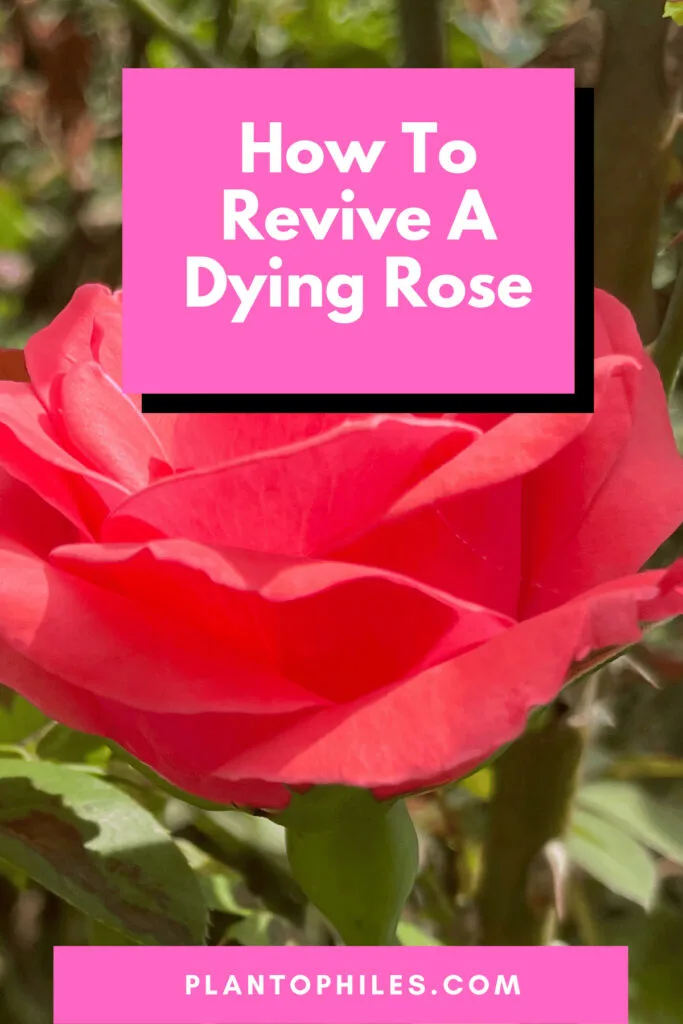
Summary
| Main Reasons for Dying Rose Bushes | Lack of fertilization, diseases, pests, and insufficient water or sunlight. |
|---|---|
| How To Revive A Dying Rose Plant. 1. Adjust the Care Schedule | Watering: Water at the base, avoiding leaves. Water in early morning or late evening. Light: At least 6 hours of direct sunlight. Soil: Optimal pH range is 5.5-7.0; adjust pH as needed. |
| How To Revive A Dying Rose Plant. 2. Use Pesticides and Fungicides | Necessary for treating diseases like powdery mildew and black spots, or for addressing pests like aphids. |
| Homemade Pesticide Recipe | Mix 1 tablespoon of vegetable or Neem oil, 1 cup of water, and 1 teaspoon of liquid soap. Spray on affected areas early in the morning or late at night. Reapply every 5-7 days and after heavy rainfall. |
| How To Revive A Dying Rose Plant. 3.Fertilize Your Rose Well | Organic Fertilizer: Use a balanced liquid fertilizer monthly or slow-release fertilizer every 3-6 months. Liquid vs. Slow-Release: Use slow-release fertilizer for regular feeding and liquid fertilizer for quick recovery. |
| Symptoms of a Dying Rose | Brown stems, dark black patches on leaves, yellow leaves, wilting leaves, leaf drop, rotting roots, and visible pests. |
| Dormancy vs. Dying | Dormancy: No growth, loss of leaves and blossoms but stems remain agile. Dying: Symptoms like color change in stems, dryness, and other signs of deterioration. Test: Score away some of the outer layers of a stem; green and moist indicates dormancy, brown and dry indicates dying. |
Table of Contents
1. Adjust the Care Schedule for your Rose

Watering
When caring for your rose ensure you water it the right way. Roses don’t enjoy wet leaves, so you should only water them from the base, not the top. Moist leaves can result in fungi or diseases attacking your plant.
Don’t water during sunlight hours. I suggest watering during the early morning or in the late evening when the sunlight isn’t that strong. This method ensures the plant gets the hydration it needs without evaporation.
Light
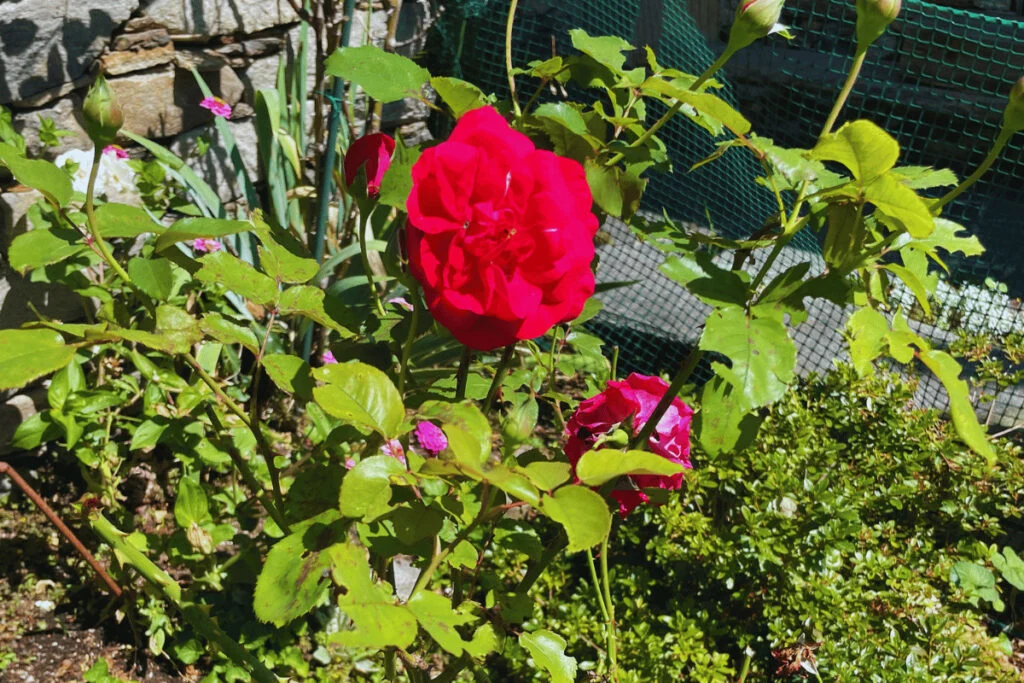
Your rose needs roughly 6 hours of sunlight daily. It will thrive more in a sunny location than in a shady one.
Some varieties, such as the “Scarborough Fair” rose, can tolerate partial shade but still need regular sunlight to be healthy.
If your rose isn’t getting enough sunlight, it will not thrive or bloom at all. You may even notice that the leaves will become desaturated or wilted.
Soil
Roses typically enjoy a soil mix with a pH range of around 5.5-7.0.
If the acid levels of the soil are too much or too little, it can result in discoloration in the foliage and problems with your rose’s growth.
To combat this, you can either purchase a compost branded toward growing roses or buy a soil pH tester online and make adjustments accordingly.
One trick that I find very useful in cases of soil with a high acidity is adding powdered agricultural limestone. This can be used to neutralize the pH levels quickly.
2. Use Pesticides and Fungicides
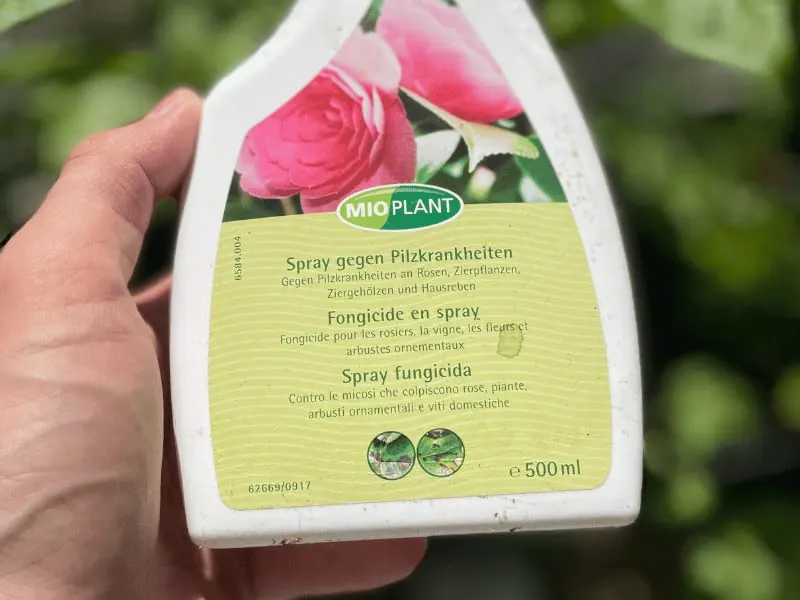
Using pesticides and fungicides are necessary to revive a rose that either is infested by pests or a disease.
Roses are susceptible to diseases and pests. Both diseases and pests cause your rose’s health to deteriorate rapidly. It is a good idea to identify and treat the problem as soon as possible.
If the stems have become black or spotted alongside a lack of leaves and blossoms, this is a sign that your rose has a disease. The most common diseases that affect roses are powdery mildew and black spots. These diseases primarily affect the leaves of roses and will cause patches of discoloration and fungi. Overwatering your rose leads to diseases such as honey fungus and root rot.
Similarly, an infestation of pests can also cause lifelessness in roses. Common pests that occur in roses are aphids and greenflies.
These insects suck sap from the leaves and stems, eventually strip your plant of nutrients needed to survive.
Many pesticides and fungicides on the market have been explicitly made for roses, but I suggest using a homemade recipe before resorting to harsher chemicals.
How to make a Homemade Pesticide for Roses
I have found that the most effective handmade solution for pests and diseases is a mix of oil and soap. This his how you can mix your own pesticide:
- Mix a tablespoon of vegetable or Neem oil in one cup of water, and add a teaspoon of liquid soap.
- Place this soap-oil mixture into a spray bottle and apply it all over the affected areas of your rose. Be sure to do this early in the morning or late at night so that any exposure to direct sunlight won’t cause the leaves to burn.
- Reapply the solution every 5-7 days and again after heavy rainfall. You should start to see signs of recovery within as little as a few weeks.
3. Fertilize Your Rose Well
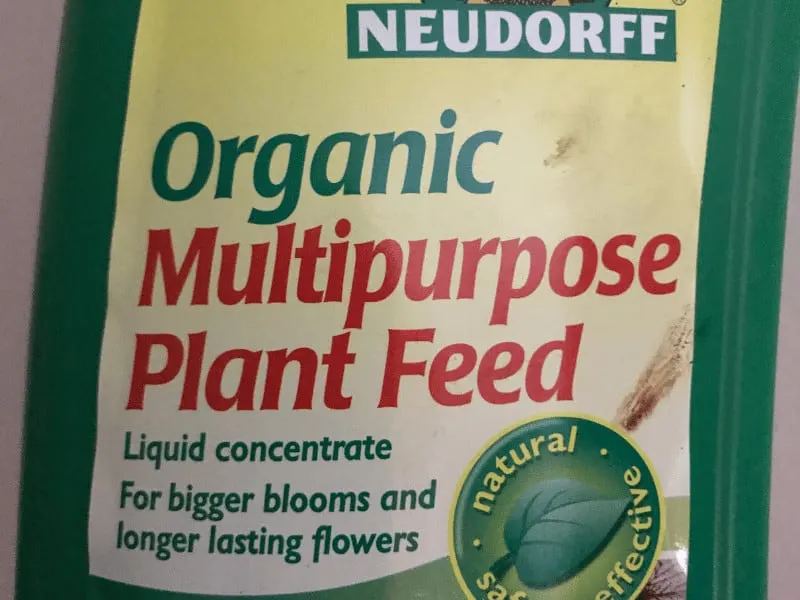
Fertilize a rose once a months using a well-balanced liquid fertilizer. Alternatively use slow-release fertilizer every 3-6 months. Roses are ravenous plants and, therefore, need to be fertilized frequently. They need macronutrients and micronutrients to thrive. The most important macronutrients are abbreviated as NPK. This stands for N (Nitrogen), P (Phosphorus), and K (Potassium).
Roses are sensitive to nutrient changes. So stick to your routine. Overfertilizing your rose will cause the leaves to become brown and look burnt and shriveled up. Too little fertilizer will cause the leaves to become yellow and wilted.
Should you use liquid Fertilizer or Slow-Release Fertilzer for a Rose?
I recommend using slow-release fertilizer whenever possible. This is due to the slow-release properties of granular fertilizers, meaning that your plant will be very unlikely to suffer from over-fertilization if applied correctly.
However, I think it is best for a rose from a lack of fertilization to be treated with a liquid fertilizer.
Liquid fertilizers act much quicker than granular, which should result in your rose recovering almost instantly.
Top tip – Ensure you remove any weeds around your rose, especially if planted into the ground.
Weeds can strip and steal nutrients from the soil, meaning that your rose won’t be able to benefit from them.
Where to buy Rose fertilizer
Rose fertilizers can be purchased from most plant nurseries and DIY stores, and I suggest using a granular fertilizer during your regular feeding schedule.
Symptoms of a Dying Rose
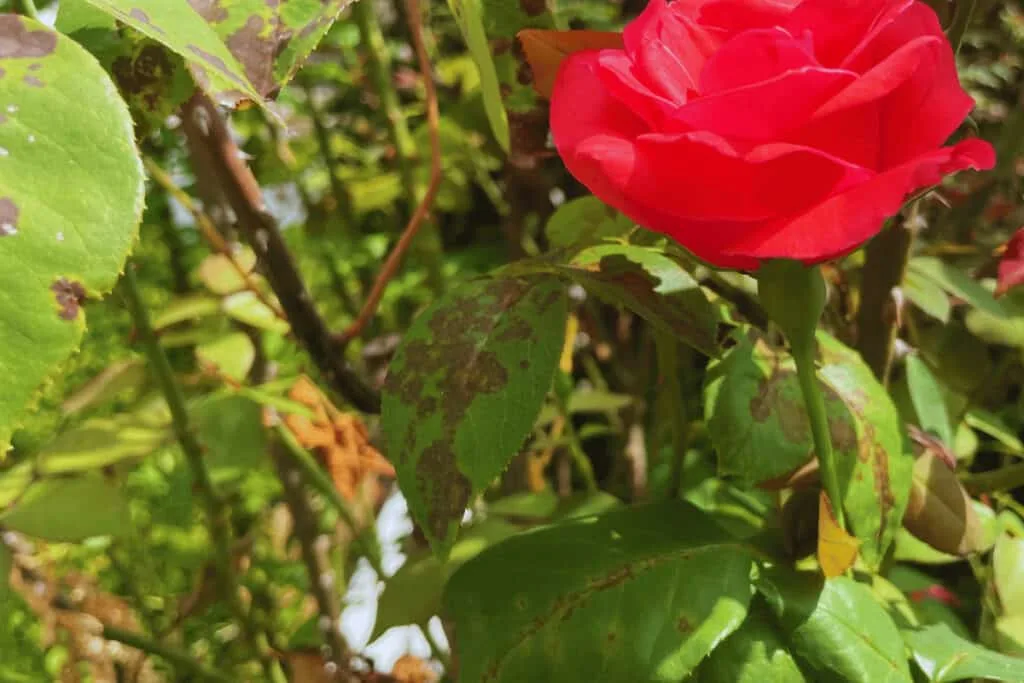
The most common signs of a dying rose bush are:
- Brown Stems
- Dark Black Patches on leaves
- Yellow Leaves
- Wilting Leaves
- Lead Drop
- Rotting Roots
- Visible Pests
Your Rose enters Dormancy
Some new rose owners may be unaware that roses enter dormancy during the winter. This is where they store their energy and go into hibernation to increase their strength for the following year.
Symptoms of dormancy in roses are very similar to those of a dying rose, which can often cause confusion in plant owners.
During your rose’s dormancy period, your rose will lose its leaves and blossoms. There will be no progression in its growth.
It is often the case that gardeners mistake a rose that is in dormancy for one that is dead and diseased. This leads them to either give up on their plant or start to tend to it in ways that are not needed.
This can cause unnecessary and irreversible harm. The main way to tell the difference between a rose in dormancy and a dying rose is by looking at the branches and stems.
Typically, dormancy will not cause any dramatic color change or damage to the stems of your plant. Even if the formerly green stems have turned a slight brown, they should still be agile and bendy to the touch.
How to check if you Rose is Dormant
One way to check if your rose bush is dead or dormant is to use a sanitized pruning knife to lightly score away some of the outer layers of one of the stems.
If the underlayer is green and moist, your plant is likely dormant, whereas if the underlayer is brown and dry, it is likely your plant will die or die.
FAQ
What is the lifespan of a rose?
On average, roses have a lifespan of 35 years. With adequate care, your rose could live even longer, with some being reported to live for hundreds of years.
I hope the tips on how to revive a rose bush are helpful. Roses are the crown jewels of many gardens. But I know from experience that roses in gardens do not always look great. Diseases and pests are often present and need to be dealt with. Changes in your care also make a difference to take into account.

Daniel has been a plant enthusiast for over 20 years. He owns hundreds of houseplants and prepares for the chili growing seasons yearly with great anticipation. His favorite plants are plant species in the Araceae family, such as Monstera, Philodendron, and Anthurium. He also loves gardening and is growing hot peppers, tomatoes, and many more vegetables.


